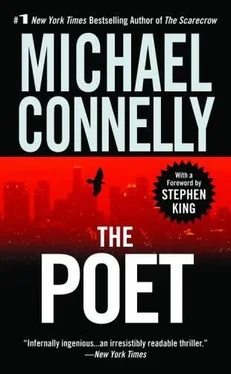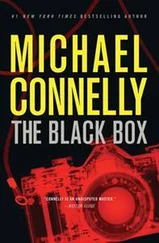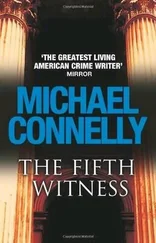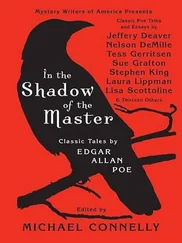SMPD detective Constance Delpy said she and her partner began watching the carousel ride after receiving a complaint from an employee who had described Gladden as loitering near children and taking pictures out on the beach of nude children being washed at the showers by their parents.
Though Gladden was fingerprinted upon his arrest, Santa Monica does not have its own fingerprint computer and relies on use of a Department of Justice computer and other departments, including the LAPD, to run prints on the AFIS network. The process usually takes days because departments run their own prints as priorities.
In this case, the Santa Monica prints taken of the man originally identified as Brisbane were not run by the LAPD until Tuesday. By then, Gladden-who had spent Sunday night in the county jail-had bailed out by posting a $50,000 bond.
The LAPD then also identified Gladden late Thursday through the print taken from the motel room.
Detectives involved in the two cases were left to wonder about the sequence of events and how they allegedly took a murderous turn.
"There is always second-guessing when things like this happen," said Delpy of the SMPD Exploited Child Unit. "What could we have done better to keep him locked up? I don't know. Sometimes you win and sometimes you lose."
Thomas said the real crime was in Florida where Gladden was allowed to go free.
"Here you have a man, an obvious pedophile, and the system lets him go," Thomas said. "When the system doesn't work, it always seems to be a case like this, where somebody innocent pays the price."
Gladden quickly went on to the other story. He felt a weird sense of elation as he read about himself. He reveled in the glory of it.
SUSPECT DID AN 'END RUN AROUND JUSTICE' IN FLORIDA
By Keisha Russell Times Staff Writer A gifted jailhouse lawyer, according to authorities, William Gladden used his prison-learned wiles to subvert the justice system and then disappear-until this week.
Gladden worked at the Little Ducks Childcare Center in Tampa eight years ago when he was arrested and charged with molesting as many as 11 children over a three-year period.
The arrest spawned a highly publicized trial resulting in his conviction on twenty-eight of the charges two years later. By all accounts, the key evidence leading to the convictions was a cache of Polaroid pictures of nine of the young victims. In the photos, the children were seen in various stages of undress in a closet at the now defunct childcare center.
The telling thing about the pictures, however, was not that some of the children were nude, but the looks on their faces, according to Charles Hounchell, the former Hillsborough County prosecutor who was assigned to the case.
"All the kids were scared," Hounchell said Friday in a telephone interview from Tampa where he is now in private practice. "These kids didn't like what was being done and it showed. It really went to the truth of the case. What their faces said in the photos matched the things they told the counselors."
But at trial, the photos were more important than the counselors and what the children had told them. Despite objections from Gladden that the photos had been discovered during an illegal search of his apartment by a police officer whose son was one of the alleged molestation victims, the judge allowed the photos into evidence.
Jurors said afterward that they relied almost exclusively on the photos to convict Gladden because the two counselors who dealt with the children had been discredited by the attorney representing Gladden for their alleged methods of leading the children into voicing accusations against Gladden.
After his conviction, Gladden was sentenced to 70 years' imprisonment to be served at the Union Correctional Institute at Raiford.
In the prison, Gladden, who already had a degree in English literature, studied poetry, psychology and the law. It appears that it is in the law that he excelled. The convicted molester quickly learned the skills of a jailhouse lawyer, according to Hounchell, and helped other inmates with appellate briefs while composing his own.
Among his more celebrated "clients" in the prison's sexual offender ward were Donel Forks, the so-called pillowcase rapist of Orlando, former Miami surfing champion Alan Jannine and Las Vegas stage hypnotist Horace Gomble. All three are serving time for multiple rape convictions and Gladden was unsuccessful in his attempts to win them freedom or new trials with appeals he wrote while serving time with them.
But within a year of his imprisonment, Hounchell said, Gladden filed a thoroughly researched appeal of his own conviction which challenged once again the search that led to the discovery of the incriminating photos.
Hounchell explained that Raymond Gomez, the officer who found the photos, had gone to Gladden's home in a rage after his five-year-old son revealed that he had been molested by a man who worked at the boy's childcare center.
Receiving no answer after knocking, the off-duty officer said he found the door unlocked and entered. Gomez later testified in a hearing on the matter that he found the photos spread out on a bedspread. He quickly extricated himself from the house and reported his knowledge to detectives who then obtained a search warrant.
Gladden was arrested after the detectives went back later that day with the warrant and found the photos hidden in a closet. Gladden maintained at trial that the door was not unlocked when he had left his apartment and the photos were not on display. Regardless of whether the door was unlocked and the photos left out, he argued, the search by Gomez was a clear breach of his constitutional rights to protection from unlawful search and seizure.
However, the trial judge ruled that Gomez was acting as a father, not a police officer, when he entered the apartment. The accidental discovery of the key evidence was therefore not a breach of the Constitution.
An appeals court later sided with Gladden, saying that Gomez had knowledge through his police training of search and seizure laws and should have known better than to enter the premises without authority. The Florida Supreme Court later refused to reverse the appeals court, clearing the way for a new trial without the use of the photos as evidence.
Faced with the difficult task of winning a case without key evidence the first jury said was vital, authorities allowed Gladden to plead guilty to one count of lewd behavior with a child.
The maximum sentence for such a crime is five years in prison and five years of consecutive probation. By that point, Gladden had served 33 months in prison and had earned an equal amount of good-behavior gain time. At his sentencing, he received the maximum penalty but still walked out of court a free man on probation.
"It was an end run around justice," Hounchell, the prosecutor, recalled. "We knew he did it but we couldn't use the evidence we had in our hands. After that sentencing, it was hard for me to look at those parents and their children. Because I knew this guy would be out there and that he'd probably want to do it again."
Within a year of his release, Gladden disappeared and a warrant was issued for probation violation. He resurfaced this week in southern California with what authorities here called deadly consequences.
Gladden read the story completely through a second time. He was fascinated by its thoroughness and the credit it gave him. He also liked how, if you read between the lines, it questioned the story of the cop Gomez. That liar, Gladden thought. He broke in and he ruined the case. Served him right. He was almost tempted to pick up the phone and call the reporter to thank her for the story but decided against it. Too risky. He thought of Hounchell, the young prosecutor.
"End run," he said aloud. Then he yelled it out, "End run!"
Читать дальше












